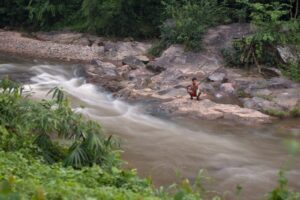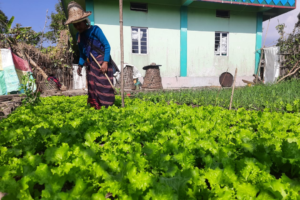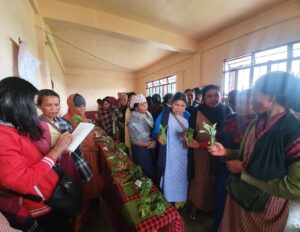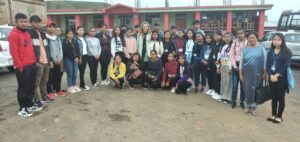Aquatic fauna has always been an integral part of our biodiversity. Communities in the Garo Hills of Meghalaya realised the need to give importance to their natural resources and have long since acknowledged the need to conserve them. Selbalgre and Darechikgre communities of West Garo Hills, are two of the many communities of the Garos that practice a method known as Wari Kanga. Wari is a term for a lake or water body and kanga means to take ownership of. Hence, Wari kanga means taking ownership of their water bodies.
Selbalgre and Darechikgre are amongst the active participating villages of NESFAS and are part of the ongoing project, “Protection of forests in Meghalaya by adopting participatory, gender centric and equitable approaches”, funded by The Nature Conservancy. The aquatic habitat of these two communities have also been documented under this project.
For Wari Kanga, a number of water bodies within the community are closed for fishing, as a bid to conserve the native species for the future generations, and to prevent their over-exploitation. Some of the species found in the two communities are– Gangetic Loach, Kuria labeo, Pangusia labeo, horny head chub, Shalynnai, Elongate glass perchlet, Aborichthys loach, Golden Mahseer etc.
In Darechikgre, Pokkil Wari, Dagal Bibra & Ganol Bibra, Wari Adipek, Rongnagra Wari are water bodies that have been closed for fishing for about 25 years, and are reopened every five years for a day or two. Pokkil Wari stretches for approximately 1 kilometer. When the water bodies are opened for fishing, anyone can come and engage in the sport of fishing. If however, anyone is found violating the rule, a fine of Rs. 10,000 is imposed on them.
Similarly, in Selbalgre community, Miksak Wari and Dobakkol Wari have been closed to the public for fishing for about 10-12 years now, and the community members have no plans to ever open it again. A penalty of Rs 50,000 is imposed on whoever violates the law or engages in fishing in these prohibited areas. Miksak Wari stretches for about 1 ½ km and Dobakkol Wari stretches for about ½ km. The fish outside of these restricted areas are free for the sport of fishing.
Besides the method of Wari Kanga, the communities also practice a method of rearing fish at the household and community, and/or church level in man-made lakes and ponds, which are known as Pokkri. This is done so as to conserve fish as well as for human consumption, for community development and empowerment and for generating income. The fish are reared and caught annually. Besides native species, some common species such as Rohu, Catla, Grass Carp etc are reared in the Pokkris. The fish feed on their own, however, some rearers of the Selbalgre community occasionally feed them rice husk, red ant eggs, and leftover fermented rice from making rice beer.
The conservation efforts toward conserving aquatic fauna are commendable, but the question remains as to whether these are enough to fight the over-exploitation of our water bodies and what other steps are being taken so as to combat the climate change that is resulting in the drying up of our rivers and streams?




